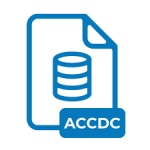.DBC File Extension

FoxPro Database
| Developer | Microsoft |
| Popularity | |
| Category | Database Files |
| Format | .DBC |
| Cross Platform | Update Soon |
What is an DBC file?
‘.DBC file extension’ holds a mystique that beckons exploration. Standing as the cornerstone of FoxPro databases, these files encapsulate a rich history and a wealth of technical intricacies.
Understanding their origins, structure, and functionalities unveils a deeper appreciation for the legacy of FoxPro and the evolution of database technology.
More Information.
The ‘.DBC file extension’ was introduced as part of FoxPro’s transition from a file-based system to a true client-server architecture.
Its primary purpose was to serve as a container for database tables, indexes, relationships, and other structural elements. This allowed for better organization, improved scalability, and enhanced security compared to its predecessors.
Origin Of This File.
The journey of the ‘.DBC file extension’ begins with the emergence of FoxPro, a relational database management system (RDBMS) developed by Fox Software in the late 1980s. Originally known as FoxBASE, it quickly gained prominence for its ease of use and robust capabilities.
As FoxPro evolved, so did its file formats, leading to the birth of the ‘.DBC file extension’ as a repository for database structure and metadata.
File Structure Technical Specification.
At its core, the ‘.DBC file extension’ adheres to a structured format designed to store metadata essential for managing FoxPro databases.
It consists of headers, tables, indexes, and other components meticulously arranged to facilitate efficient data retrieval and manipulation. The technical specifications of the ‘.DBC file extension’ vary depending on the version of FoxPro, with each iteration introducing new features and optimizations.
How to Convert the File?
Converting ‘.DBC’ files to alternative formats or migrating to different database systems is a common requirement for organizations seeking to modernize their infrastructure. Several methods exist for accomplishing this task, including:
- Exporting Data: Utilize FoxPro’s built-in export functionality to extract data from ‘.DBC’ files into formats compatible with other database systems, such as CSV or SQL.
- Third-Party Tools: Explore third-party conversion tools specifically designed to facilitate the migration of FoxPro databases to popular RDBMS platforms like MySQL, PostgreSQL, or Microsoft SQL Server.
- Custom Scripting: Develop custom scripts or applications to programmatically read ‘.DBC’ files and transfer their contents to the desired target database, allowing for fine-grained control and customization.
Advantages And Disadvantages.
Advantages:
- Centralized Management: By consolidating database structure into a single file, ‘.DBC’ simplifies administration and maintenance tasks.
- Improved Performance: The optimized structure of ‘.DBC’ files enhances data access speed and query execution, leading to better overall performance.
- Enhanced Security: With built-in support for user permissions and encryption, ‘.DBC’ files provide robust security measures to safeguard sensitive data.
Disadvantages:
- Vendor Lock-In: FoxPro’s proprietary nature means that accessing ‘.DBC’ files outside of the FoxPro environment can be challenging, leading to vendor lock-in concerns.
- Limited Compatibility: While FoxPro offers tools for interacting with ‘.DBC’ files, compatibility with other RDBMS platforms may be limited, hindering interoperability.
- Legacy Status: As FoxPro wanes in popularity and support, reliance on ‘.DBC’ files may pose long-term viability concerns, necessitating migration to modern database solutions.
How to Open DBC?
Open In Windows
- FoxPro: The most straightforward method is to use Microsoft Visual FoxPro, the native development environment for FoxPro applications, to open and work with ‘.DBC’ files on Windows.
- Microsoft Access: Alternatively, you can use Microsoft Access, part of the Microsoft Office suite, to import and manipulate data from ‘.DBC’ files.
Open In Linux
- Wine: Install Wine, a compatibility layer that allows running Windows applications on Linux, and then run FoxPro within Wine to open ‘.DBC’ files.
- FreeDOS: Consider using FreeDOS in conjunction with Wine to emulate a Windows environment for running FoxPro and accessing ‘.DBC’ files on Linux.
Open In MAC
- Wine: Similar to Linux, you can use Wine on macOS to run FoxPro and open ‘.DBC’ files.
- Virtualization: Install a virtualization software like Parallels Desktop or VMware Fusion to run a Windows virtual machine on macOS, then use FoxPro within the virtual machine to access ‘.DBC’ files.













